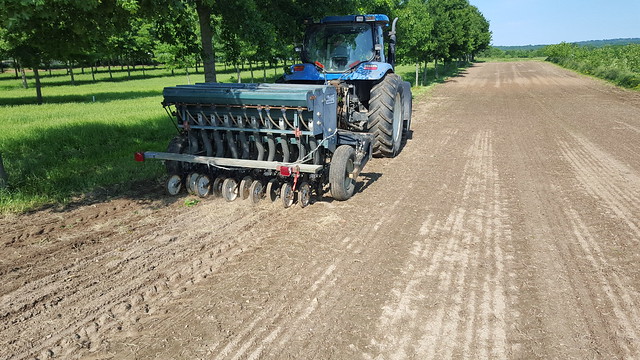Forage plots in wooded areas are on the rise with landowners
By Abbi Ross
U of A System Division of Agriculture
Fast Facts:
- There is an increasing interest in planting forages into wooded areas
- Most of Arkansas’ native forest are comprised of hardwoods
- There are a variety of forage species for landowners to choose from
(301 words)
Download related PHOTO: https://www.flickr.com/gp/uacescomm/2x40jN
FAYETTEVILLE, Ark. — There is increasing interest in planting forages into wooded areas, as food plots for wildlife or to provide more grazing ground for cattle, said Dirk Philipp, associate professor of animal science for the University of Arkansas System Division of Agriculture.

For those who own land and are looking to establish forage areas, there are a few steps that help make the process easier, Philipp said.
“It might be best to contract a professional forester to evaluate land and give recommendations on which trees have value and which do not,” Philipp said about those looking to establish new forages in wooded areas.
Most of Arkansas’ native forest are comprised of hardwoods, like oak. In the southern regions, pine is more common.
Preparing the site and testing soil fertility is a must, Philipp said. Fertilization decisions should be based on soil test recommendations, available from local county Extension offices. One option for landowners is to burn the sites. Burning helps remove underbrush and prepare the soil surface to be worked.
Planting options depend on the landowners situation, but many landowners’ only choice is broadcasting grass seed.
“Planting can be done with a broadcast seeder on the back of an ATV or with a small tractor and a planter that is narrow enough to navigate around the remaining trees,” Philipp said. “Brillion seeders work well too.”
There are a variety of forage species for landowners to choose from, Philipp said. Cool season perennial and annual grasses work well. Orchardgrass, tall fescue and annual ryegrass are all possible options, as well as some annual clovers.
Annual legumes may have to be reseeded every year for grazing purposes, Philipp said.
If the landowner can afford to let annual legumes develop seed, chances are good that annual legumes will be present for a long time, Philipp said.
To learn more about Division of Agriculture research, visit the Arkansas Agricultural Experiment Station website: https://aaes.uark.edu. Follow us on Twitter at @ArkAgResearchand Instagram at ArkAgResearch.
About the Division of Agriculture
The University of Arkansas System Division of Agriculture’s mission is to strengthen agriculture, communities, and families by connecting trusted research to the adoption of best practices. Through the Agricultural Experiment Station and the Cooperative Extension Service, the Division of Agriculture conducts research and extension work within the nation’s historic land grant education system.
The Division of Agriculture is one of 20 entities within the University of Arkansas System. It has offices in all 75 counties in Arkansas and faculty on five system campuses.
Pursuant to 7 CFR § 15.3, the University of Arkansas System Division of Agriculture offers all its Extension and Research programs and services (including employment) without regard to race, color, sex, national origin, religion, age, disability, marital or veteran status, genetic information, sexual preference, pregnancy or any other legally protected status, and is an equal opportunity institution.
Media Contact: Fred Miller
U of A Division of Agriculture
Arkansas Agricultural Experiment Station
(479) 575-5647
fmiller@uark.edu
Related Links